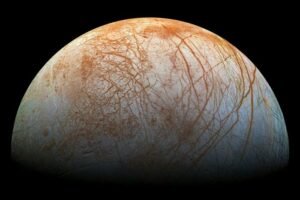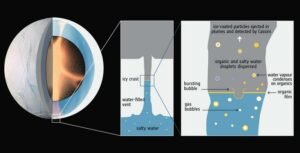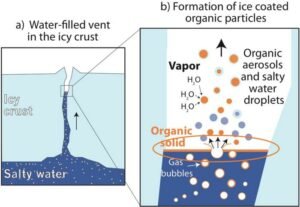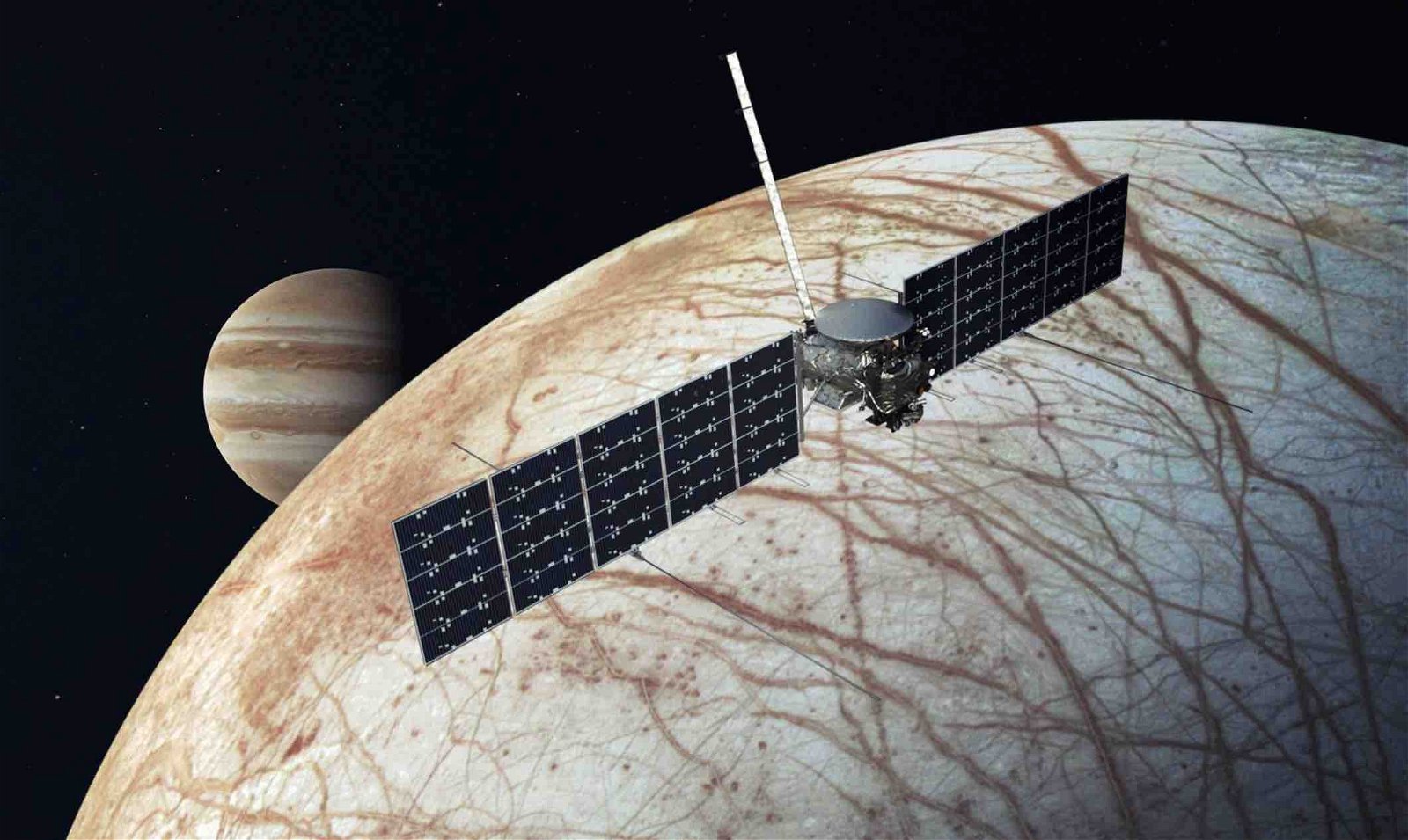A series of experiments studying the sensitivity of life-hunting instruments to be employed in NASA’s forthcoming Europa Clipper Mission have revealed promising new capabilities that significantly raise its chances of being the first to detect lifeforms beyond Earth.
With a launch window that opens in October of this year and a planned insertion into Jupiter’s orbit sometime around April 2030, the Europa Clipper is equipped with a suite of science instruments. Based on recent experiments, one particular instrument, SUrface Dust Analyzer, was determined to be so sensitive that it could likely detect signs of alien life in individual grains of ice ejected by Jupiter’s icy moon.
“For the first time, we have shown that even a tiny fraction of cellular material could be identified by a mass spectrometer onboard a spacecraft,” said lead author Fabian Klenner, a University of Washington (UW) postdoctoral researcher in Earth and space sciences. “Our results give us more confidence that using upcoming instruments, we will be able to detect lifeforms similar to those on Earth, which we increasingly believe could be present on ocean-bearing moons.”
Oceans Beneath Surface of Icy Moons are Ideal Targets for Alien Lifeforms
While the search for life outside Earth has many targets, including the soil of Mars or the clouds of Venus, astrobiologists are increasingly optimistic about finding signs of past and present alien lifeforms within the subsurface oceans of the solar system’s icy moons. Along with Europa, these targets include Saturn’s moon Enceladus. Those hopes received even more fuel when researchers recently found evidence of phosphate on the surface of Enceladus.
The researchers explain, “This planetary body now appears to contain energy, water, phosphate, other salts, and carbon-based organic material, making it increasingly likely to support lifeforms similar to those found on Earth.”


In the decade since NASA’s Cassini mission detected plumes of water and ice being ejected by Enceladus, mission planners and amateur enthusiasts alike have theorized about how such a life-hunting mission might actually take place. While some of the more exotic proposals include mini submarines or a snakelike probe that can crawl down into those subsurface oceans, the most popular involves flying a sample mission through those ejected plumes and scanning them for clues to alien lifeforms.
Now, an international team of researchers says instruments that might be included on upcoming missions should not only be able to detect signs of alien lifeforms, but they believe the conditions are ideal for such a finding as soon as the Europa Clipper.
Lab Study Shows Instruments Could Spot Signs of Life in a Single Grain of Ice
To see if instruments slated to join future missions would be able to detect signs of life in the plumes ejected from Enceladus and Europa, the UW research team selected a type of bacteria called Sphingopyxis alaskensis for study. That’s because this particular bacterium lives in cold environments on Earth and can survive on very little nutrients, making it a likelier analog of extraterrestrial bacteria that may thrive beneath the surface of these icy moons. The researchers also say this bacterium is just the right size for future probes to spot within a single grain of ice.
“They are extremely small, so they are, in theory, capable of fitting into ice grains that are emitted from an ocean world like Enceladus or Europa,” Klenner said.


After coming up with a lab experiment that would best simulate the conditions a future mission might experience these ejected ice grains, the team used a mass spectrometer to see if they could spot the life signs of their chosen bacterium in a single grain of ice. Significantly, they note that their instrument was less sensitive than the one planned for the Europa Clipper.
As hoped, their study was a success. An analysis of water injected into a vacuum showed that the right instruments could indeed detect alien lifeforms as they were ejected from Enceladus or Europa. In fact, the scientists behind the successful experiments say searching for life in this method “is more successful than averaging across a larger sample containing billions of individual grains.”
Instrument on NASA’s Europa Clipper Mission May Be First to Discover Alien Lifeforms
In their published study, the UW researchers supplemented their experiments by looking at the conditions on Earth that cause bacteria to collect on the ocean’s surface and cause a layer of “ocean scum.” They soon realized that a similar set of conditions likely exists on the surface of these extraterrestrial oceans. As a result, any subsurface water ejected into space would likely capture pieces of alien lifeforms and encapsulate them within grains of space ice, where NASA’s instruments could detect them.
“We here describe a plausible scenario for how bacterial cells can, in theory, be incorporated into icy material that is formed from liquid water on Enceladus or Europa and then gets emitted into space,” Klenner said.


Although they are not directly involved with the planning of NASA’s missions, the team notes that NASA’s Europa Clipper, thanks to its unique instrumentation, could be perfectly equipped to find alien lifeforms living beyond Earth.
“With suitable instrumentation, such as the SUrface Dust Analyzer on NASA’s Europa Clipper space probe, it might be easier than we thought to find life, or traces of it, on icy moons:” said senior author Frank Postberg, a professor of planetary sciences at the Freie Universität Berlin, “if life is present there, of course, and cares to be enclosed in ice grains originating from an environment such as a subsurface water reservoir.”
Christopher Plain is a Science Fiction and Fantasy novelist and Head Science Writer at The Debrief. Follow and connect with him on X, learn about his books at plainfiction.com, or email him directly at christopher@thedebrief.org.

